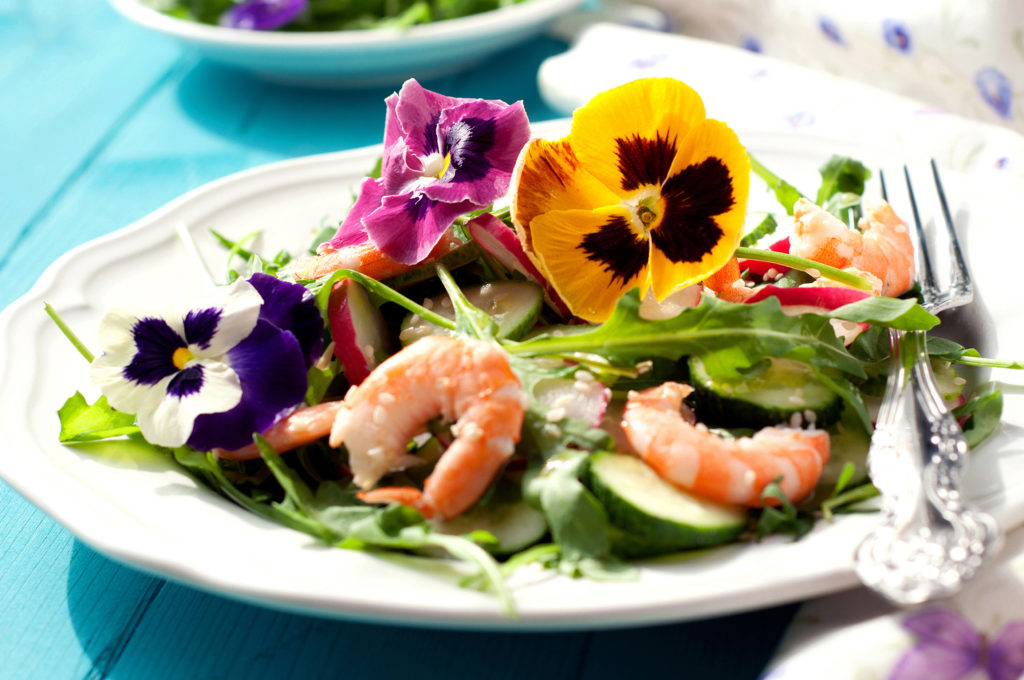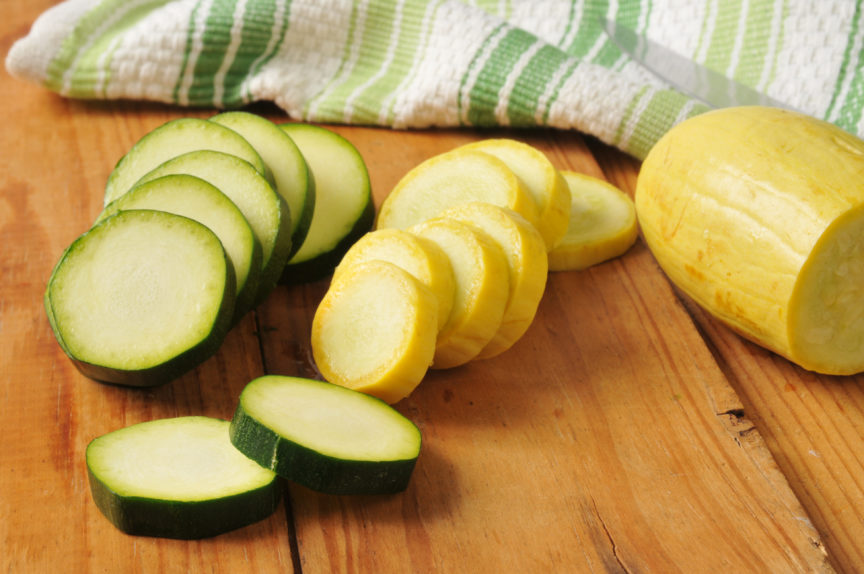Courgettes (or zucchini) like all squash, has its ancestry in the Americas. However, the varieties of squash typically called “zucchini” were developed in Italy, many generations after their introduction from the Americas. They are versatile veg, being able to be grilled, cut into batons and eaten raw with dips, or gently fried in butter and a little oil with garlic and some little tomato puree added.
Per 100g
- Fat 0.3g
- Cals 17
- Carbs 3g
- 1g fibre
- Vit C 30%
- Vit B-6 10%
Courgettes are an excellent source of copper and manganese and are a very good source of vitamin C, magnesium, dietary fibre, vitamin B6 and beta carotene, a precursor to vitamin A. The carotene part normally gives plants a red or orange hue (such as pumpkins and sweet potatoes or yellow courgettes.
Edible Flowers
 Plenty of plants have edible flowers, particularly the herbs and most of the pea and bean family. Sometimes it’s best just to eat the petals, not the whole flower.
Plenty of plants have edible flowers, particularly the herbs and most of the pea and bean family. Sometimes it’s best just to eat the petals, not the whole flower.
The edible herb flowers are borage, all the mints, hyssop, chives, sage, rosemary and thyme. Then there are the violets, violas and primroses where you can eat the entire flower. You can eat the flowers of the day lily (hemerocallis), but stick to just the petals if you are using roses, calendula, lavender, jasmine or lilac. You can also eat the blossoms of rocket, radish, squash and of course courgettes.
You can add blue borage flowers, orange calendula petals or pink rose petals to a salad and really pep up the presentation. A vegetable dish can be enhanced with a mix of herb flowers, the combinations of which are endless. Small flowers and petals look great on cupcakes and flower petals can be added into homemade fruit jellies or used as a garnish, and party drinks are given added punch with ice cubes containing an edible flower. Some blossoms can handle being cooked, such as courgette flowers. Only firm and fresh blossoms that are only slightly open should be cooked to be eaten. The inner pistills need to be removed from female flowers, and the stamens removed from male flowers. The stem of the flowers can be retained to hold onto during cooking, rather than injuring the delicate petals (or remove prior to cooking, or prior to serving). Recipes often involve the flowers being deep-fried as fritters or tempura after dipping in a light batter, or can be stuffed, sautéed, baked, or used in soups.
Zucchini, whose skin can be yellow in colour, but is much more often found in grocery stores showcasing its dark green skin. (The dark green skin of zucchini may also be naturally striped or speckled.) Zucchini is one of the summer squash types that grow on flowering plants with edible flowers. Black beauty, cocozelle, golden, courgette, and dark green are some of the popular varieties of zucchini.
Food features and recipes like this appear in the Desang Diabetes Magazine, our free-to-receive digital journal. We cover diabetes news, diabetes ‘kit’ and information on food suitable for maintaining good blood glucose control or a diabetic diet, including a regular Making Carbs Count column. It’s free! Go to the top of this page to sign up – we just need your email address. See current and past issues at
www.desang-magazine.co.uk

